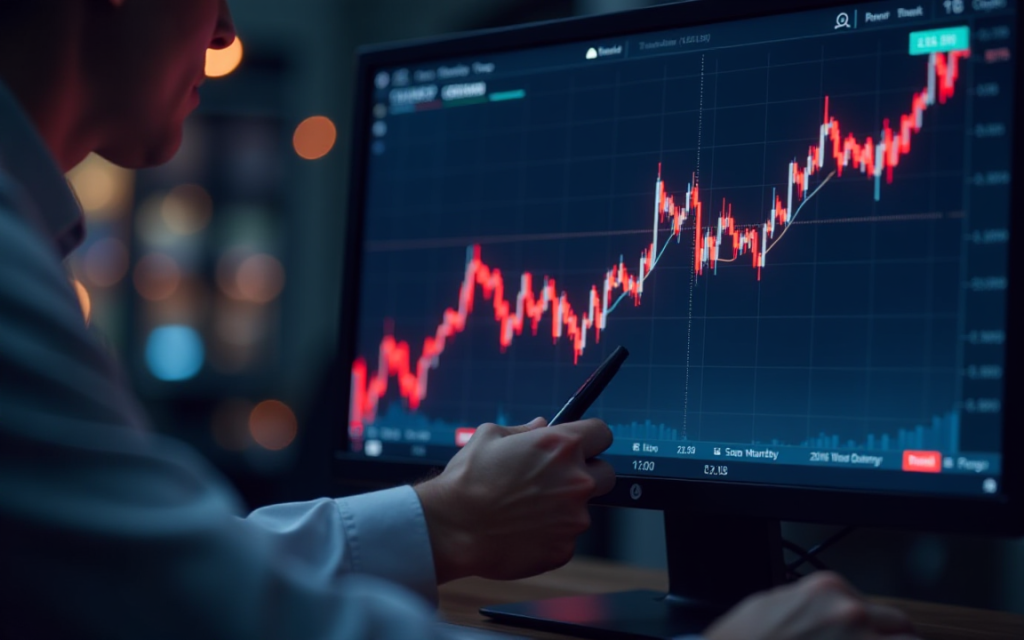Wall Street is within striking distance of new all-time highs, as a powerful combination of artificial intelligence optimism, geopolitical easing, and resilient corporate earnings continues to push US equities upward despite a turbulent year.
Index futures traded higher on June 26, pointing to a continuation of gains that have already seen the tech-heavy Nasdaq 100 notch a fresh record this week.
The broader S&P 500 now sits just 0.85% shy of a new peak, having recovered nearly 20% from its April lows.
Wednesday’s session saw the Nasdaq Composite close at 19,973.55, up 0.31%, while the S&P 500 ended at 6,092.16.
The Dow Jones slipped slightly to finish at 42,982.43.
The recovery, which has defied predictions of a prolonged sell-off amid global conflict and political uncertainty, is being powered by megacap tech, solid economic data, and the market’s unrelenting faith in the AI revolution.
“When you factor in the geopolitical backdrop — the ongoing conflict, volatility and uncertainty — I wouldn’t have expected the S&P 500 to snap back to new highs this quickly,” Kevin Simpson, portfolio manager at Capital Wealth Planning said in a CNBC report.
“This kind of strength speaks to just how much liquidity is still in the system and how eager investors are to buy dips in a market dominated by megacap tech and AI enthusiasm.
Ceasefire and trade diplomacy calming markets
A ceasefire in the Middle East has been a key catalyst in the recent market surge, easing fears of a potential spike in oil prices or major supply disruptions.
Investors had spent much of the spring bracing for escalation, but hopes of stability in the region have allowed equities to rebound decisively.
President Donald Trump’s decision to hold off on imposing steep new tariffs — especially on China and the European Union — has further reduced global economic anxiety.
The recent US-China trade truce, which includes Chinese commitments to supply rare earth materials, has helped cool tensions and restore investor confidence.
“We expect more trade deals to provide some additional clarity and eventually reduce corporate, consumer and investor anxiety,” Chris Haverland, global equity strategist at Wells Fargo Investment Institute., said in a note.
AI tailwind remains powerful
The artificial intelligence boom, which has underpinned equity valuations since 2023, shows no sign of slowing.
Companies like Nvidia, Alphabet, and AMD posted strong gains in recent sessions, bolstered by surging demand for AI infrastructure and chips.
Micron’s better-than-expected earnings report has added fuel to the rally in chip stocks during the June 26 pre-market session.
“The secular trend of AI remains robust, and recent adoption and monetization trends should underpin the next leg of the AI rally amid a supportive backdrop,” Ulrike Hoffmann-Burchardi, head CIO global equities at UBS, said in a note to clients.
JPMorgan now estimates that AI-related investments could surpass $1 trillion by 2030, particularly in areas like generative AI computing, networking, and storage.
Steady economy and Fed support ease recession fears
The US economy, though facing headwinds, remains on stable ground.
Unemployment is still low at 4.2%, and the May nonfarm payrolls data showed only slight softening in the labor market.
Inflation remains manageable, with tariffs having minimal impact on consumer prices so far.
Federal Reserve Chair Jerome Powell recently reiterated that the central bank is prepared to make two rate cuts later this year, though the timing will depend on further data.
The 10-year US Treasury yield has edged down to 4.27%, reflecting expectations of monetary easing.
In a note to clients, JPMorgan’s chief global equity strategist Dubravko Lakos-Bujas wrote, “In our baseline scenario we believe a US recession will be avoided.”
“Recent weakness in some of the labour market indicators and limited pass-through from tariffs to inflation so far could prompt a Fed easing earlier than our December forecast.”
In a separate development, Citi has forecast that gold prices could drop more than 20% by late 2025 or early 2026, citing improving US growth prospects.
Corporate earnings show resilience
Despite geopolitical risks and regulatory overhangs, corporate earnings have remained surprisingly robust.
FactSet data shows that S&P 500 earnings rose by 4.9% in the second quarter, marking eight straight quarters of year-over-year growth.
Nvidia led gains among megacaps on Tuesday with a 4.3% rise, followed by Alphabet’s 2.3% and AMD’s 3.6% increase.
Investors are also awaiting results from Walgreens and Nike later today for further confirmation of the consumer sector’s strength.
Investors brace for potential volatility in July
While sentiment remains largely positive, investors are preparing for potential volatility in July.
The upcoming July 8 deadline for the suspension of reciprocal tariffs, along with additional US labor market data, could be key triggers.
“Markets often tend to see more volatility in the build up to conflicts and then rally or turn to other factors once it’s started,” BMO Private Wealth’s Carol Schleif noted.
For now, the market’s rally seems intact, driven by AI euphoria, steady earnings, and a gradual unwinding of the “wall of worry” that built up earlier this year.
With the S&P 500 nearing a record high, investors are once again betting that optimism can outpace uncertainty.
The post S&P 500 nears record high despite headwinds: key drivers behind the surprise rally appeared first on Invezz


